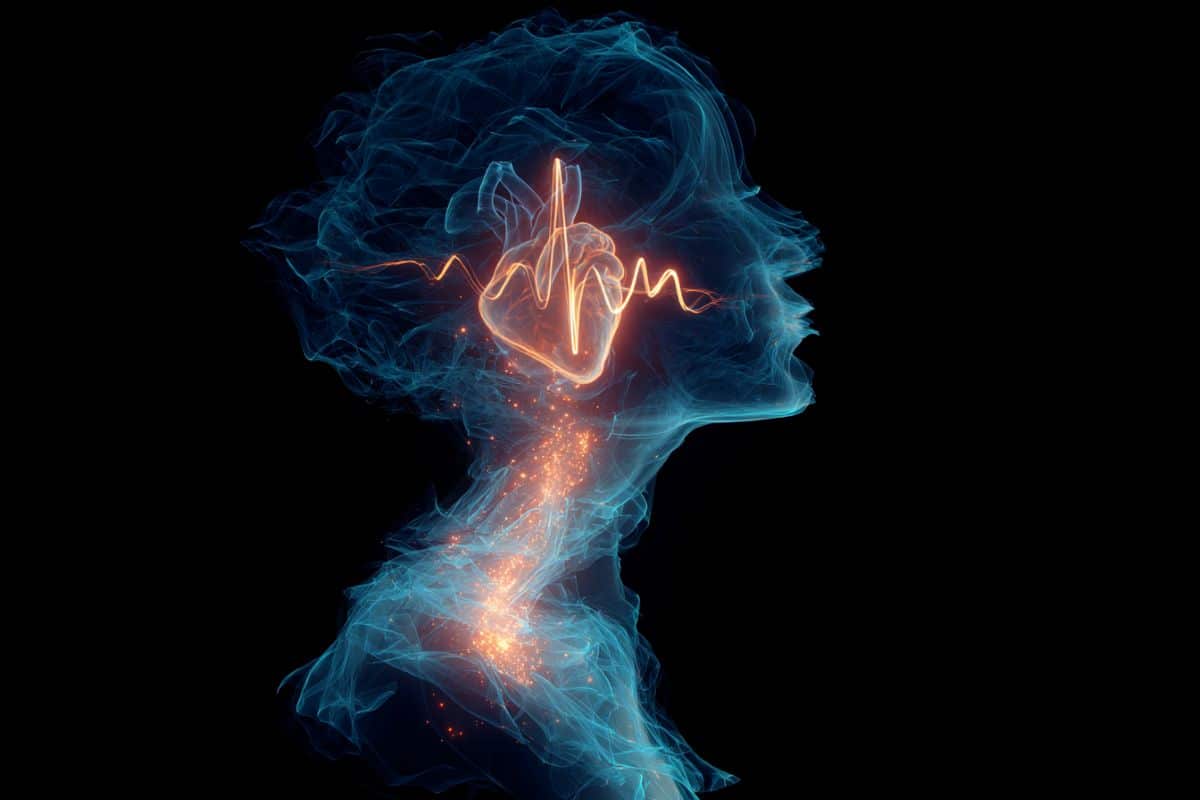Summary: Researchers emphasize that the heart and brain are deeply interconnected, with every heartbeat influencing cognition and emotion within milliseconds. This link helps explain why cardiovascular diseases like hypertension often coincide with mental health disorders such as depression and anxiety.
The team describes brain-body states operating at different timescales: microstates tied to emotions, mesostates linked to stress, and macrostates underlying chronic disease. These findings suggest treatments should integrate cardiovascular, neurological, and psychological factors for a more complete approach to health.
Key Facts
- Dynamic States: Heart and brain form micro-, meso-, and macrostates shaping emotions and health.
- Shared Risk: Cardiovascular and mental illnesses frequently overlap due to brain-body integration.
- Holistic Care: Effective prevention and treatment must address both physical and psychological aspects.
Source: Max Planck Institute
The influence of the heart and circulatory system occurs within milliseconds , and every single heartbeat plays a role. The role of the heart in the psyche and cognition is evident in the high coincidence of cardiovascular diseases, such as high blood pressure and heart attack, and mental illnesses, such as depression and anxiety disorders.
There are a number of explanations for this high coincidence, but none of them have been definitively proven yet. For example, negative psychological reactions to a diagnosis of cardiovascular disease are cited as a reason for the development of mental illness.

On the other hand, an unhealthy lifestyle in the presence of mental illness is considered a risk factor for the development of cardiovascular disease.
The concept is based on integrated brain-body states. Every physical process, such as a heartbeat or any change in blood pressure or metabolism, is automatically accompanied by a mental or psychological process. This means that the two are inextricably linked.
Different time scales
Brain-body states occur on different time scales, which are described as a dynamical system: short-lived brain-body states (known as ‘microstates’) correspond, for example, to emotions such as anger or joy.
An example of longer-lasting brain-body states (known as “mesostates”) is acute or chronic stress. Mental and cardiovascular illnesses are reflected in long-term brain-body ‘macrostates’.
“Mental illnesses always have a cardiovascular component, which may not yet have clinical symptoms, and vice versa. The high coincidence of mental and cardiovascular illnesses could therefore be compared to the tip of the iceberg,” says Arno Villringer, Director of the Department of Neurology at the Max Planck Institute for Human Cognitive and Brain Sciences.
According to the researchers, these considerations mean that both aspects must always be taken into account in the prevention and treatment of cardiovascular and mental illnesses, even if only one of the aspects is initially in the foreground.
It must be emphasised that, in addition to the heart and cardiovascular system, other organs and systems, and in particular the immune system, also interact continuously with the brain and the psyche and should therefore be integrated into expanded brain-body-state concepts in a similar way.
Key Questions:
A: Each heartbeat and circulatory change is tied to psychological processes, linking body and mind in real time.
A: They share integrated brain-body states, where heart and brain processes influence each other over short and long timescales.
A: Prevention and therapy should always consider both heart and mental health, even if only one shows symptoms.
About this cardiovascular system and cognition research news
Author: Arno Villringer
Source: Max Planck Institute
Contact: Arno Villringer – Max Planck Institute
Image: The image is credited to Neuroscience News
Original Research: Open access.
“Brain–body states as a link between cardiovascular and mental health” by Vadim Nikulin et al. Trends In Neuroscience
Abstract
Brain–body states as a link between cardiovascular and mental health
Changes in mental and cardiovascular functions occur concurrently even at short timescales down to subsecond dynamics.
Brain–body states arise from the tight integration of the CNS and autonomic PNS with the endocrine and cardiovascular systems.
We characterize brain–body states in terms of dimensions such as blood pressure, heart rate, and brain activity that underlie mental functions such as cognition and emotion.
Using a dynamical systems approach, we conceptualize brain–body states as continuously traversing a state space. We define stable parts of trajectories within this space as micro-, meso-, or macro-states, depending on their duration and reversibility.
Instances of emotions are prototypical examples of brain–body microstates, and stress is an example of a meso-state, whereas depression, anxiety, and hypertension represent macro-states.





Discussion about this post